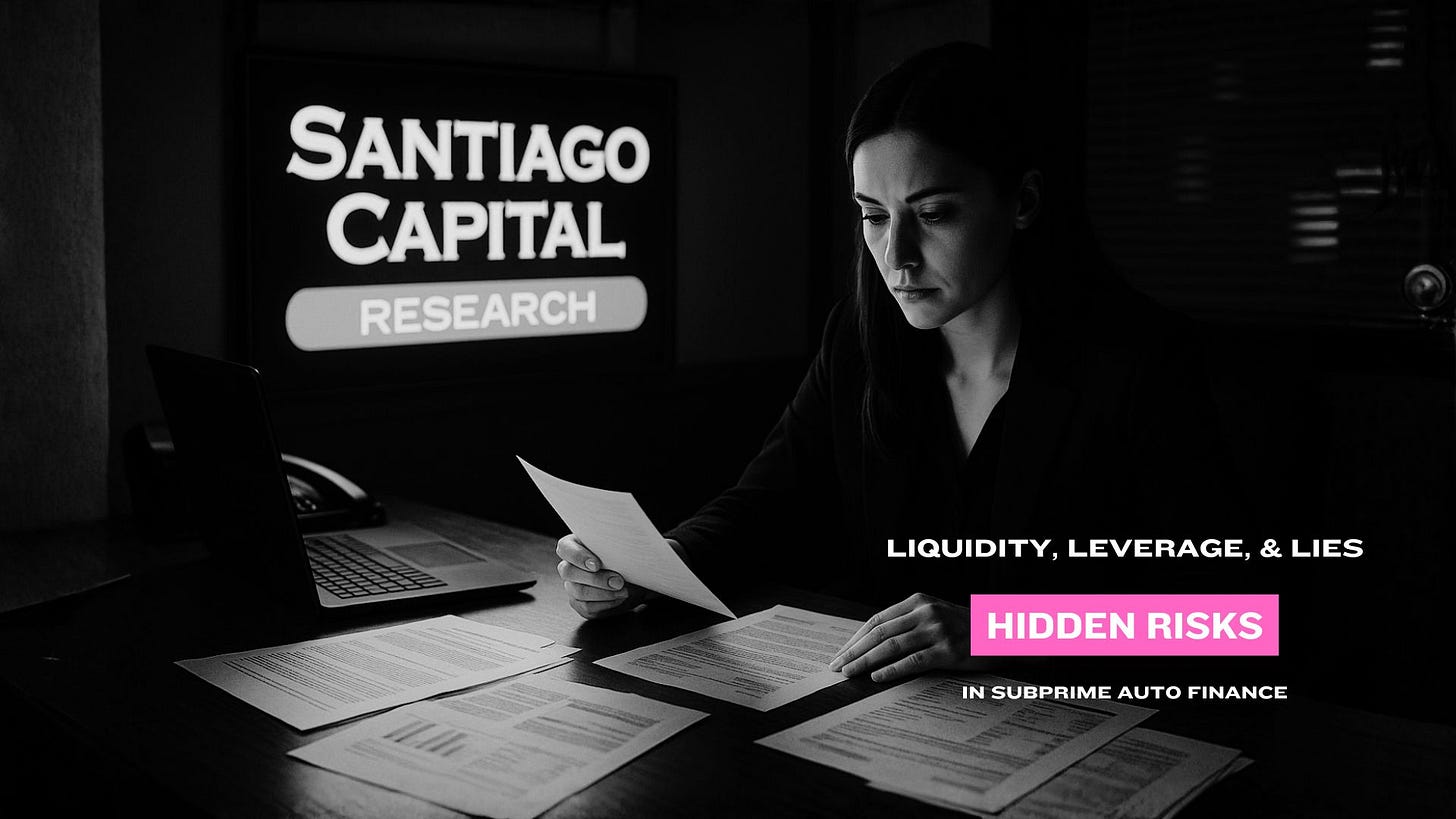Liquidity, Leverage, and Lies
Hidden Risks in Subprime Auto Finance
Executive Summary
Financial stress rarely announces itself. It builds quietly inside optimistic narratives, relaxed underwriting standards, and structures that only work while liquidity is abundant.
In our work on private credit, we warned that capital was flowing into opaque, lightly regulated lending channels where collateral discipline was weaker and investors were relying heavily on reported numbers.
Later, in Investor Euphoria and the Anatomy of a Crash, we showed how the same willingness to look past aggressive assumptions had spread into areas boosted by the AI boom.
The bankruptcy of Tricolor, a subprime auto lender, shows that this pattern was not confined to institutional credit or to technology narratives. It was also present in consumer-facing, securitization-dependent lending.
On its own, Tricolor’s failure is not large enough to be called systemic.
But what makes it important are the allegations that followed: inflated vehicle values, limited income verification, and problems in the loan data used to support securitizations. Those are the same types of weaknesses we highlighted before. If those weaknesses are common across subprime auto lenders, the risk does not stay at the originator level. It moves into the funding channels that connect nonbank lenders to banks, credit funds, and ABS investors.
The mechanism is familiar. Subprime auto lenders use an originate-to-distribute model. They make high-risk loans to borrowers with thin credit files and often high loan-to-value ratios, sometimes against used-car prices that were temporarily elevated.
They then pool those loans and sell them as asset-backed securities to investors, often with financing from hedge funds, private equity firms, and investment banks. When the underlying collateral is weaker than presented, those securities become far riskier than the ratings suggest. Rising delinquencies or falling recovery values then create losses higher up the chain.
This matters because the subprime auto market is now interconnected with traditional finance.
Banks provide warehouse lines and asset-backed commercial paper conduits that fund these lenders. If used-car prices fall sharply, or if several lenders face stress at once, banks will be forced to recognize losses and tighten credit. That is how a problem that starts on the periphery moves toward the core, the same path we have seen before.
There is also a confidence channel.
If investors come to believe that some lenders overstated borrower income, inflated vehicle values, or masked default rates, they will not differentiate for long. Funding can be withdrawn at the market level, not just for the name in distress. That would restrict credit to consumers, push more marginal borrowers into default, and pressure used-car prices lower, a self-reinforcing deleveraging loop.
Finally, Tricolor’s collapse highlights how exposed the shadow banking side of this market is.
These lenders rely on short-term, confidence-based funding and securitization markets that can disappear quickly once questions are asked. If this episode brings more scrutiny or ratings actions, other lenders could lose access to capital even if they did nothing wrong, which would in turn hit the banks that provided the leverage in the first place.
Tricolor’s bankruptcy is therefore best understood as a small event with large signal value. It combines weak underwriting, elevated leverage, and the false comfort of securitization. If similar practices are widespread, subprime auto could become the next place where stress shows up first…just as we have seen in other late-cycle credit booms.


